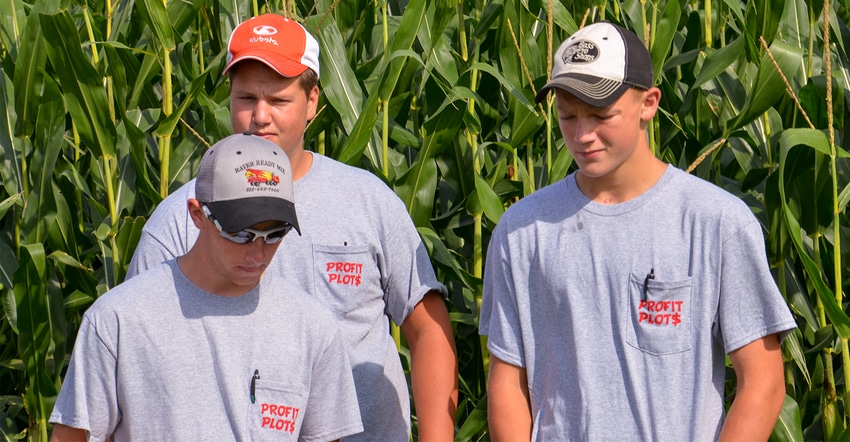September 7, 2017

Who says researchers can’t think outside the box? Joel Wahlman, superintendent of the Southeast Purdue Agricultural Center near Butlerville, Ind., hit on a winning idea. He provided time for those involved to debut the idea at the SEPAC field day.
Looking for something interesting to put in a very visible plot, Wahlman hit upon this triple-win bonanza. Why not invite schools with ag programs and FFA chapters to come up with what they think is the best recipe for growing corn? Only this isn’t just about growing the most corn.
“We want to see who can produce the most profit per acre,” Wahlman explains. “The idea is to give students a chance to learn about research, and let us get some new ideas at the same time.”
4 takers
Four local FFA chapters took SEPAC up on the offer. Participating chapters are South Ripley, Batesville, South Decatur and North Decatur. Each school’s FFA advisor selected kids to participate and guided them as they came up with what they thought would be the most profitable way to grow corn.
Members from each chapter explained what they did and why they did it to farmers at the field day.
SEPAC included its own typical recipe for nonresearch acres as a fifth treatment, Wahlman says. Treating it as a real research trial, each formula was repeated four times.
“We tried to do whatever they came up with,” Wahlman says. “They picked the hybrid, fertilizer rates and application times. They also picked the weed control program. We only put on a couple of restrictions. One group wanted to moldboard plow, but the farm is entirely no-till, so they had to stay with no-till. And we didn’t have equipment to apply fungicide over tall corn.
“However, we also let them make marketing decisions. They could forward-contract. One group even chose to grow non-GMO corn because they thought they could earn a premium, which would help add more profit. Growing corn is only half the equation. Marketing is the other half, and we wanted to include both.”
Once plots are harvested this fall and the grain is marketed, Wahlman and his crew will determine how each chapter compared to one another.
Triple win
The FFA members win because they’re getting to apply what they learn in class in a real-world situation. “We also wantd to expose them to the world of research, and show them why things like replication are important,” Wahlman says.
Wahlman believes the SEPAC staff will win because they’re getting a look at fresh ideas someone else came up with. “One of the plots ran into a deficiency problem, which alerted me that the whole plot might be borderline on that nutrient. I wouldn’t have known otherwise,” he relates.
Farmers will win because they’ll get to see the results. Wahlman hopes they’ll zero in on the practices each team used, not just on the corn hybrids and brands.
What do the kids say? “We learned one thing we will do different next year,” says Quirin Gauck, North Decatur. “We had 12 members on the planning committee, and that’s too many!”
Scott Johnson, his advisor, agreed. “They were so into it, they got to arguing,” he quips.
You May Also Like




